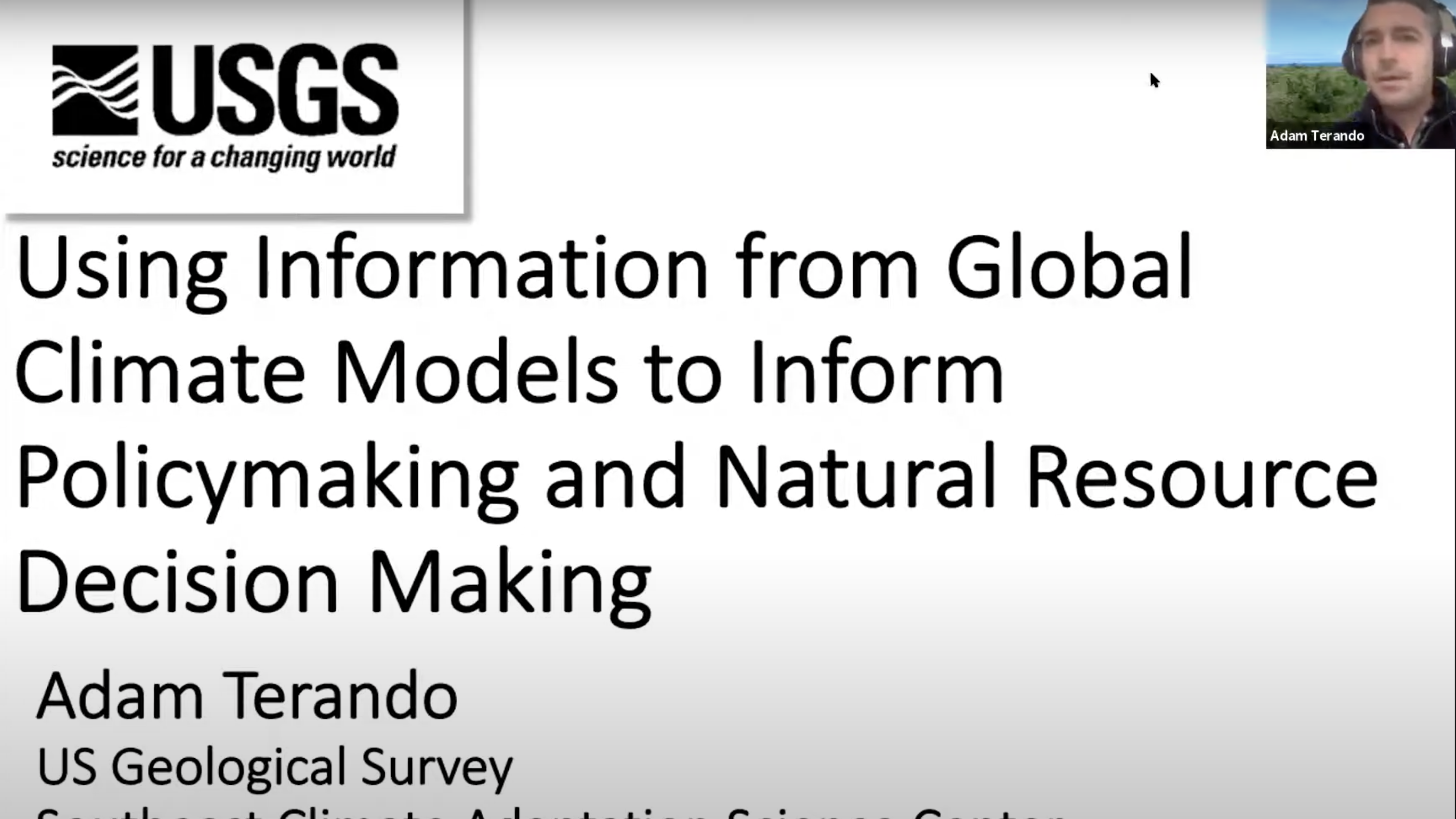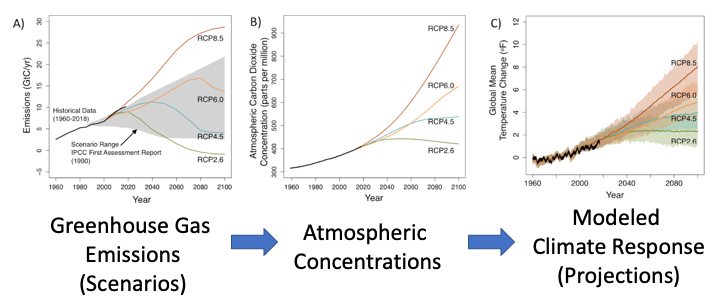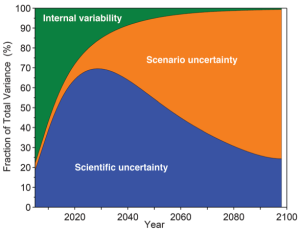Seminar Summary: Using Global Climate Models to Inform Decision Making

On March 16, 2021, SE CASC Research Ecologist, Dr. Adam Terando gave the second presentation the SE CASC Spring Science Seminar Series titled, Using Information From Global Climate Models to Inform Policymaking & Natural Resource Decision Making. View a recording of the presentation here.
Dr. Adam Terando is a USGS Research Ecologist whose work investigates climate change risks in fire-adapted ecosystems and high resolution climate modeling, and informs scientific assessment and advising. He was lead author on the 2020 USGS Open-File report, Using Information From Global Climate Models to Inform Policymaking—The Role of the U.S. Geological Survey, which aims to assist decision makers and policy makers understand the purpose of climate change in informing natural resource management and policies.
In the seminar, Dr. Terando presented a main premise of the report – to approach climate change as a risk management problem. To deal with these risks, scientists and decision makers must consider the context in which a specific decision is being made. For example, the risks associated with sea level rise will be different for a decision maker managing a species going extinct under climate change and a decision maker managing coastal infrastructure. The utility of the climate science and how you might use climate model results will vary based on the identified context. The report specifically focused on the need for climate science in the federal government and how it applies to natural resource management. The federal government has an obligation to plan for the future in order to manage public resources wisely, so having long-term climate projections and scenarios are crucial to informing risk assessments and planning.
The following definitions of commonly used terms provide a basis to better understand the concepts presented throughout the talk:
- Scenario: a sequence of events that defines a plausible future (What if the future unfolded like this?)
- Projection: a predicted outcome for a given scenario of the future (What do we expect to happen if the future unfolded this way?)
- Prediction: a statement about the future expressed with some degree of certainty or likelihood (What do we expect the high temperature will be tomorrow?)

Scenarios are useful for decision contexts with high complexity and or high uncertainty. Exact predictions are difficult to make in situations with high uncertainty and with complex systems, as it is nearly impossible to incorporate that intricacy into a certain conclusion of what will happen in the future. Therefore, scientists approach these problems from a “what if” perspective to provide a more informed understanding of what may happen in the future. More specifically, climate scenarios translate information about projected greenhouse gas emissions into mathematical models of equivalent atmospheric concentrations to inform the climate scenario that indicates the response of the climate to these atmospheric concentrations. These climate scenarios and models help decision makers better characterize and manage future risk.
The Fifth Assessment Report of the Intergovernmental Panel on Climate Change presents a range of scenarios or a plausible range of outcomes for the future. The plausibility of these trajectories are determined by physical and socio-economic constraints and are also named “representative concentration pathways,” which represent the change in radiative forcing at the Earth’s surface. Even with this plausible range of trajectories, it remains difficult to determine a “most likely” scenario. Dr. Terando recommended that decision makers decide which scenario is most plausible based on their own risk tolerance.
To understand the climate response of these scenarios, scientists have to use climate models. Climate models, or Global Climate Models (GCMs), are numerical models that utilize physics to model the motion and behavior of the atmosphere and ocean. Over time, these models have evolved to include multiple processes, more complexity, and a finer resolution. While these models provide information about simulated global climate patterns and large-scale climate drivers, this resolution is still too broad to provide useful information for regional and local climates. Thus, regional climate models are needed to resolve local climates.
Regardless, Global Climate Models can still be used to inform decision making at the global scale by projecting how the climate system could respond to perturbations, or forcings, for different climate scenarios. In this case, scientists construct experiments where multiple climate models are used to then simulate how weather conditions could respond to an external forcing applied to the system. This information helps researchers understand how the climate patterns could respond in the future given a particular plausible scenario of the future.

Understanding the uncertainty in these models helps scientists understand the types of risks they are facing, which will then inform their decision making. There are three primary sources of uncertainty in climate modeling determined by the time-frame of projections:
- Projecting out for the first decade or two, uncertainty is driven by large-scale multi-year weather patterns (Internal variability)
- Uncertainty in projections 20-50 years into the future is driven by unresolved science about how the climate system works or will respond to certain drivers (Scientific uncertainty)
- Beyond 50 years, the range of uncertainty is driven by human actions that affect global GHG emissions (Scenario uncertainty)
Recommended best practices to follow when utilizing climate model information to inform decision making:
- Use a wide range of scenarios
- Use multiple models
- Consider climate-relevant timescales (100+ years)
- Articulate uncertainties and how they are expected to evolve over time.
Dr. Terando concluded by explaining that “dealing with risk and uncertainty is difficult because there is no objective answer. Decision makers must assess their own levels of tolerance of risk and loss.” But when in doubt, ask the CASC!
View the webinar recording
Helpful links from the seminar Q&A:
- Categories:
